Problems with the vascular system of the legs are found in more than half of the Earth’s population. The greatest discomfort causes venous varicose veins under the feet. Pathology is characterized by a decrease in tone of the blood vessel wall and a swelling of the cavity. Due to the sagging of the foot veins, the reverse blood flow in the human body is disturbed. What complications are needed for varicose veins and how to fight them correctly, we understand the material below.
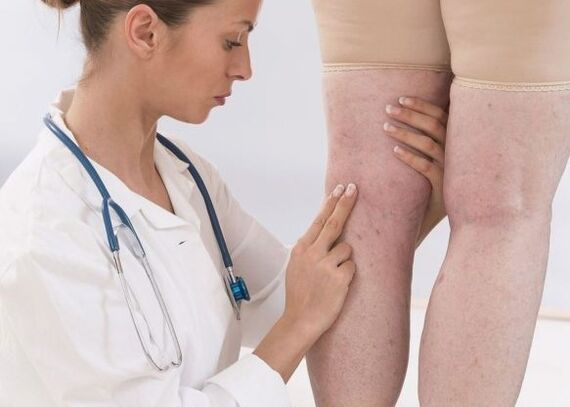
General characteristics and causes of varicose veins
The lids in the operation of the vascular system of the leg were initially formed against the background of improper operation of the venous valve. Here, it is worth knowing that due to the intensity of gravity, the blood in the heart flows freely to the lower limbs. In the opposite direction, the blood moves under the influence of natural pressure, creating the walls of healthy blood vessels. This wave is enough to overcome the power of the earth's attraction.
If the tone of the blood vessel is disturbed, the body does everything possible to push the blood towards the blood vessel. That is, for this purpose, it independently increases blood pressure (blood pressure). From such "efforts", the venous valve works worse without completely closing the wings of the person. In this case, blood actively enters the surface from the deep vein, which leads to its additional re-decomposition.
The causes of varicose veins in the lower limbs are the following factors:
- Genetic (transmission of the disease through male or female lines).
- Hormonal failure occurs in the context of autoimmune processes, pregnancy, childbirth or reproductive system diseases.
- The type of sitting activities, and vice versa, is related to long-term legs.
- A sedentary lifestyle.
- Too much weight (obesity).
- Strength exercises through weightlifting while sitting or squatting.
- Smoking and drinking.
- Stay in the straight line of the sun for a long time.
Symptoms and the first sign
Symptoms of varicose veins may vary by one degree or another depending on the patient's general condition and disease stage. Moreover, the signs of pathology are not always obvious. The only common feature of varicose veins is a condition called the word "heavy legs". That is, at any stage of pathology, the patient feels the severity of the legs at the end of the workday and even in the morning after sleep.
Stages I and II of venous veins: Signs and symptoms
The initial stage of leg vascular pathology is characterized by special signs. Therefore, in stage 1, the following symptoms are noted:
- a vein pattern in the form of a stellar or a blink of an eye on the legs;
- After wearing shoes or even socks, legs swelled;
- Night cramps in the calf muscles;
- Leg fatigue and heavy weight.
During the two stages of pathology, the patient develops the following symptoms:
- After wearing uncomfortable shoes for a long time or standing for a long time, the veins swell;
- Visualization of containers in containers with enlarged container volume;
- protruding and protruding lymph nodes of leg veins;
- itchy in an inflamed vein;
- Red skin.
Stages III and IV of Varicose Veins
Veins of progressive varicose veins have been characterized as signs of complications. The pictures are as follows:
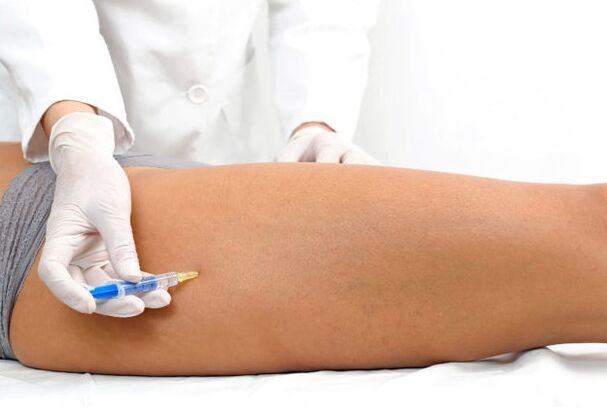
- Stage 3. In the context of the above symptoms of the patient, it is almost accompanied by swelling of the legs. Sometimes it can fall until the morning.
- Stage 4. Patients with red skin start at the beginning of ulcer formation. The location of the future nutritional ulcer is covered with white, as if there are paint patches. During the injury, the nutritional ulcers open and almost constantly seep out. The situation is dangerous because the ulcer can be infected for a second time, which can lead to suppuration in the inflammatory site.
When to see a doctor, and what
In the initial symptoms of the initial stage of a varicose vein, you should contact a hemorrologist. The doctor is engaged in blood vessels. If your clinic does not have such a doctor, you can consult a vascular surgeon or surgeon. It should be understood that the process of developing varicose veins using conservative methods is stopped at the initial stage. Ability to treat and follow all doctor's prescription strategies will make you feel lighter in your legs again.
diagnosis
In order to make the leg varicose veins effective and effective treatment, you initially need an accurate diagnosis. That is, determine the degree of vascular problems. To diagnose leg vein pathology, the following methods are used:
- The patient's legs were visually examined through a mandatory palpation.
- Ultrasound Doppler assay or floating method, which allows doctors to estimate the velocity of blood on blood vessels and the total occupancy of the foot veins.
- Scan the boat on the legs. It also allows you to evaluate the status of the valve system and the veins themselves.
- Thermal imaging. In this case, infrared radiation is used for diagnosis.
- Muslim therapy. The essence of this method is to introduce sclerotic substances in small doses and further examine blood vessels in the areas where the inflammation occurs.
- The follicle is a computer. This technology has the principle of standard MRI.
- Fleboscintraphy. Here, experts use special radionuclides to study the lymphatic and venous systems of the legs.
Treatment methods for lower limbs
Drug Therapy
You can treat varicose veins at the initial stage with the help of medication. And very effective. Select the type and name of the drug according to the severity of the patient's condition.
For external (local) use, a bleeding expert can prescribe medications in the form of a gel, a face cream, or an ointment.
Similarly, for oral administration, an anticoagulant preparation was prescribed, which successfully diluted the blood and prevented the formation of blood clots.
In the context of targeting therapy, prescribed patients are used to treat varicose veins that support the work of the blood vessels and circulatory systems. Therefore, such drugs and additives are shown:
- Vitamin. In particular, vitamin C and vitamins in group V.
- Ointments are non-replacement anti-inflammatory. Perfectly removes the inflammatory process and reduces redness in the skin.
- Vascular protectant. Distribute to enhance the tone of the veins and reduce the permeability of the capillaries.
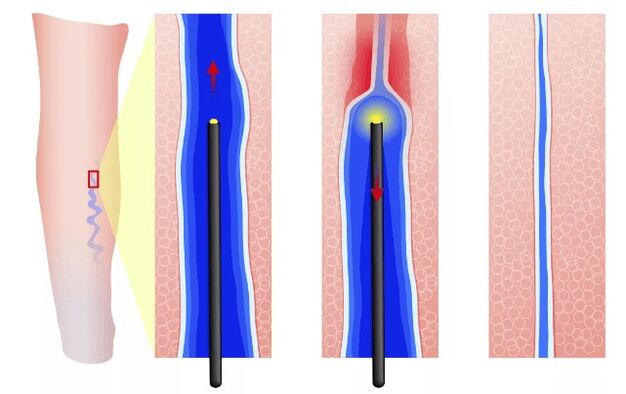
Surgery treatment of varicose veins using minimally invasive and complete operating methods
During the 3-4 stages of varicose veins, surgery is performed to clear patients with blood vessels that interfere with normal blood flow. Depending on the patient's initial status, one of the smallest invasive techniques or comprehensive surgical interventions can be used.
Sclerotherapy
This non-surgical type of process involves introducing a special ossifying agent (phlebsclosis substance) into the cavity of the vein. Their base is alcohol. Generally, all of these drugs are strictly used for intravenous administration. This substance promotes damage to the general endothelial (internal) layer of the container and its further stenosis (sclerosis). As a result, the cavity of the container has been significantly reduced or completely bonded.
In most cases, doctors use this type of medication:
- Soap fatty acids and salts. These are empty hairs, sylpisole, sotradikol, thrombosis or poison dragon.
- Cytotoxic. This is a solution for quinine with ureters, a skilled 1-5%, Vistaril, etc.
- Intimate relationship between hypertonic compounds dehydrating veins. The sodium salicylate solution is 20–40%, sodium bromide 30%, and sodium chloride 24%.
- Organic burning solution. Ethanol, glucose solution 66% or glucose.
Veinectomy
This surgical intervention technique means that several techniques are used simultaneously. But first, the patient in an upright position marks the removal of all the inflamed veins. The marking is performed under ultrasound control of blood vessels in the legs.
Using a complex venectomy, the following stages of surgical intervention were used:
- Cross-section. Otherwise, the process is called the dressing and parallel intersection of small and/or large subcutaneous veins. The seasoning is performed in the sauce area with deep legs. The transverse is performed by cutting cuts formed in the groin fold area. Its length is 3-5 cm. The surgeon then notices a large subcutaneous vein until it falls into the femur and pulls the vein to stimulate the irritation. BPV trunks (large subcutaneous veins) intersect. Only her stump is about 5 mm. The surgeon then performs the following stage of the operation from the groin area - peeling.
- Peel off. Or, otherwise, remove the trunk of the subcutaneous vein of a size. It is performed by two endoscopic cutting located at both edges of the inflamed vein. In this case, there is already a groin incision. Through it, a special probe is introduced into the cavity of the sore blood vessel, the container has a special thick olive with a tip at the end. The probe moves to the end of the inflamed ship area and sews there. The surgeon then pulled the sick boat as if to rotate it outward. Meanwhile, cut olives cut the veins from the surrounding fabric and capillaries. This method of removing sick veins is the most reliable, but at the same time it is very painful because the surrounding containers of the fabric will be affected.
- Clearing of perforated veins (dressing). In this case, the surgeon only needs to combine the perforated veins through a small cut in 1-2 cm of skin.
- Minifle case resection. Methods for removing varicose veins (small areas) and varicose lymph nodes by small endoscopic sections. If no removal of a sized subcutaneous vein is required, perform.
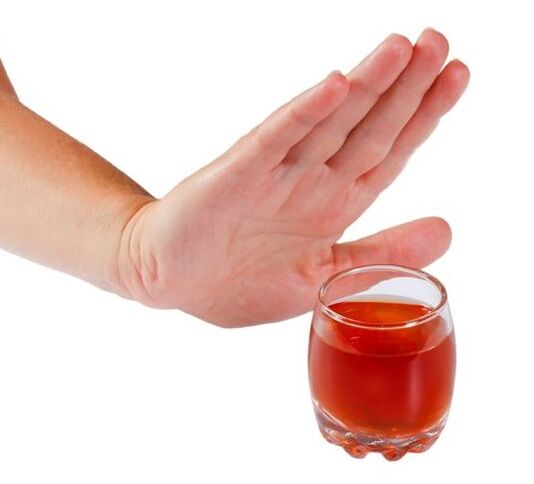
Conservative treatment
Diet for treating varicose veins
To increase the tone of the blood vessel walls and dilute the blood significantly, you need to rethink your diet. You should reject such products:
- Any form of alcohol
- Fat and smoked vegetables,
- Excessive grenade,
- Fat refined oil.
To improve leg vein status, you can and should eat this product:
- The onion is blooming
- Honey,
- Grape
- tomato,
- Fruits and berries throughout the season.
It is also shown how to drink 30 ml of water per 1 kilogram of patient's body weight.
Refuse to smoke
It is important to understand that smoking helps the formation of blood clots and significantly invades the blood clots. At the same time, not only the blood component, but also the walls of blood vessels are also affected. They are greatly less elastic, which does not work in the hands of patients with varicose veins. Therefore, in order not to aggravate the situation, it is necessary to give up harmful habits as soon as possible.
Compressed lingerie (stockings, golf, leggings)
Compressed knitted garments are one of the effective ways to prevent further development of varicose veins. This linen (golf balls, stockings and leggings) evenly distributes the intensity of blood flowing to the heart. As a result, the load on the blood vessel wall is greatly reduced and the cavity of the venous patient returns to a relatively normal state. It is very important to understand that the compression formula embedded in knitted clothing repeats the load formed by the calf muscles during intense leg movements. In other words, even if you have a sedentary lifestyle, the blood in your lower limbs will not stagnate. At the same time, in terms of compression strength, all compressed underwear are divided into 4 types:
- Preventive knitted clothing. Its compression level is 10 to 18 mm Hg. Art. Its wears the genetic susceptibility of varicose veins.
- A type of knitted clothing. In this case, the compression level is 18-22 mm Hg. Art. It is used in the initial stages of varicose veins and is used to prevent varicose veins and is enhanced with weightlifting or body exercises that are overweight.
- The second type of knitted clothing. Compression level -23–32 mm Hg. This flax is targeted at thrombotic varicose veins, or varicose veins that are formed in the context of surgery.
- The third type of knitted clothing. The compression here is 33–46 mm Hg. Art. Displayed by deep vein thrombosis or after surgery.
- Fourth grade. The compression of elastic flax is 49 mm Hg. Art. This knitted garment takes severe thrombosis or lymph nodes to improve lymphatic drainage.
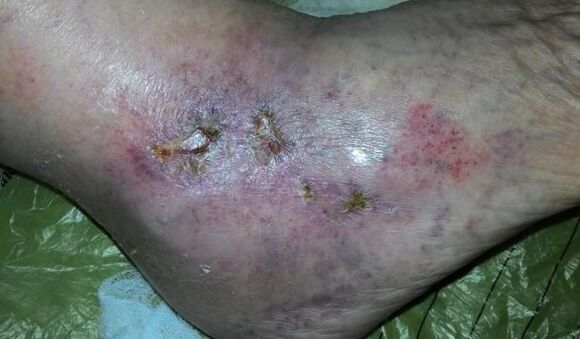
Folk methods for treating varicose veins
If varicose veins cause no complications and only pathological treatment is performed, it can be used as a treatment and folk approach. Additionally, you can use both compression and tin agents for oral consumption. Below, consider the most popular variants in folk treatment of varicose veins.
Herbal expenses and tin agents
To use homeopathy, you can use these herbs and plants:
- Chestnut. Prepare tin agent from it. Pour 10 grams. Broken chestnut fruit 100ml vodka. Everyone put it in a glass container and held on for about 10 days in a dark place. The mixture will shake regularly. After the deadline, the agency will make a prank, taking 15-20 drops every day before meals (morning and evening).
- Châlandin. Wet the bandage into the juice of the plant and apply in compressed form. The bandage is secured for 4 hours and then rinse with warm water. The treatment process is a week. After that, take a 10-day rest and repeat the treatment. The complex is three such courses.
- fern. Here they eat yogurt (3 tablespoons canteen) and hay (3 tablespoons restaurant). Everything is mixed and distributed according to the gauze. Apply the bandage to the sore legs and secure it with the bandage for three hours. This treatment technique is best used before bedtime at night.
- Chamomile Pharmacy. Make a decoction with plants (place 2 tablespoons of grass on a cup of boiling water). After that, stick the product for 30-40 minutes and then PZHED. The final infusion is used as the compressed liquid. Chamomile removes vascular stars and similar patterns very well.
in conclusion
It is worth remembering that varicose veins - pathology is irreversible. Therefore, it is now recommended that you consider the health of your legs and fundamentally change your lifestyle. Remember that your leg health is only up to you. Especially if pathological development tends to occur.
